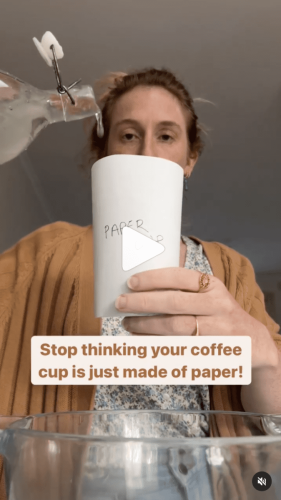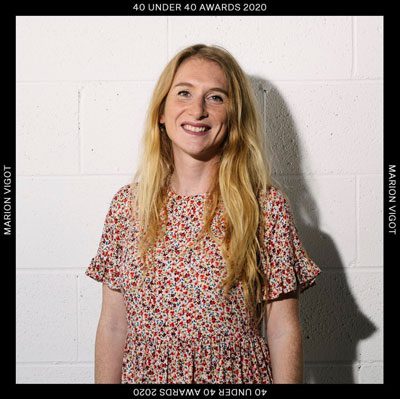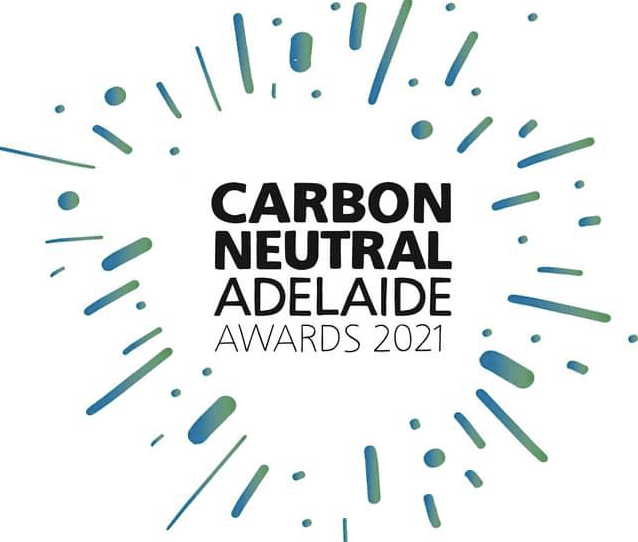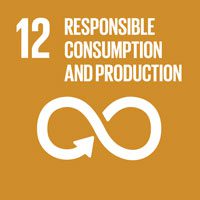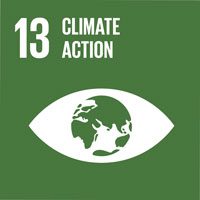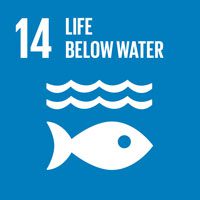Prevent Coffee Cups Greenwashing: A 2025 Guide for Coffee Entrepreneur
Australia’s coffee culture is booming, and with it comes the challenge of sustainable takeaway packaging. For coffee entrepreneurs, making the right choice in takeaway coffee cups is crucial not only for customer satisfaction but also for environmental responsibility.
This blog post will explore the options available, focusing on the importance of lining barriers, the sustainability of various materials, and why Compostable Alternatives’ aqueous-coated coffee cups are currently the most sustainable option.
Understanding the different types of options available will not only allow you to be a better coffee entrepreneur, it will also help prevent coffee cups greenwashing. Let’s get into it!
What is a Lining Barrier?
Lining barriers are essential in takeaway coffee cups to prevent leaks and maintain the integrity of the cup when filled with hot liquids. Without a proper waterproofing technology, paper cups would quickly become soggy and unusable. Various materials are used as linings/coatings, each with its own environmental impact. Let’s unpack each of them to avoid the trap of coffee cups greenwashing.
Common Materials:
- Polyethylene (PE): Low-density polyethylene is the traditional plastic lining used in most coffee cups.
- Polypropylene (PP): A more temperature and chemically resistant lining compared to PE. Traditionally used for cold cups.
- Polyethylene Terephthalate (PET): PET offers higher temperature resistance and rigidity. Also traditionally used for cold cups, plastic bottles or jars.
- Polylactic Acid (PLA): PLA is a bio-plastic derived from renewable sources like corn, potatoes, and sugarcane.
- PBS: Polybutylene Succinate is a polymer which is made from two different components. One component is fossil fuel based, and the other component can be derived from renewable plant sources.
- Aqueous Coatings: Aqueous coatings involve applying synthetic polymers particles suspended in water to create a barrier.
- Polyhydroxyalkanoates (PHA): PHAs are produced from the bacterial fermentation of bio-based materials.
Environmental Impact and Characteristics
Polyethylene (PE): PE is not biodegradable and contributes significantly to plastic pollution. It is difficult to recycle due to its bonding with paper.
- Lining Application Method: Extrusion/Lamination
- Primary Source: Fossil Fuel
- Australia Kerbside Recyclable: Yes but on its own. Plastic lined coffee cups are not recyclable in Australia
- Industrially Compostable (AS 4736): No
- Home Compostable (AS 5810): No
- Potentially Marine Degradable: No
- Shelf Life: 2+ years
Polypropylene (PP): Like PE, PP is not biodegradable and poses similar recycling challenges.
- Lining Application Method: Extrusion/Lamination
- Primary Source: Fossil Fuel
- Australia Kerbside Recyclable: Yes
- Industrially Compostable (AS 4736): No
- Home Compostable (AS 5810): No
- Potentially Marine Degradable: No
- Shelf Life: 2+ years
Polyethylene Terephthalate (PET): PET is also non-biodegradable and complicates the recycling process.
- Lining Application Method: Extrusion/Lamination
- Primary Source: Fossil Fuel
- Australia Kerbside Recyclable: Yes
- Industrially Compostable (AS 4736): No
- Home Compostable (AS 5810): No
- Potentially Marine Degradable: No
- Shelf Life: 2+ years
Polylactic Acid (PLA): While PLA is compostable under industrial conditions, it does not break down effectively in home composting systems and can contaminate recycling streams.
- Lining Application Method: Extrusion/Lamination/Water Based Dispersion
- Primary Source: Renewable
- Australia Kerbside Recyclable: No
- Industrially Compostable (AS 4736): Yes
- Home Compostable (AS 5810): No
- Potentially Marine Degradable: No
- Shelf Life: 12 Months
PBS: PBS is partly renewable and compostable in industrial settings, but not at home. Its fossil fuel component and lack of marine degradability present environmental challenges, although it is more sustainable than fully fossil-fuel-based linings.
- Lining Application Method: Extrusion/Lamination
- Primary Source: Fossil Fuel & Partly Renewable
- Australia Kerbside Recyclable: Yes
- Industrially Compostable (AS 4736): Yes
- Home Compostable (AS 5810): No
- Potentially Marine Degradable: No
- Shelf Life: 12 Months
Aqueous Coatings: Aqueous coatings are significantly more sustainable because they use less plastic and are often compostable at home.
- Lining Application Method: Water Based Dispersion
- Primary Source: Fossil Fuel
- Australia Kerbside Recyclable: Yes
- Industrially Compostable (AS 4736): Yes
- Home Compostable (AS 5810): Yes
- Potentially Marine Degradable: No
- Shelf Life: 12 Months
Polyhydroxyalkanoates (PHA): PHA shows promise as a fully compostable and marine biodegradable alternative but is not yet commercially viable.
- Lining Application Method: Extrusion/Water Based Dispersion
- Primary Source: Renewable
- Australia Kerbside Recyclable: Yes
- Industrially Compostable (AS 4736): Yes
- Home Compostable (AS 5810): Yes
- Potentially Marine Degradable: Yes
- Shelf Life: TBA
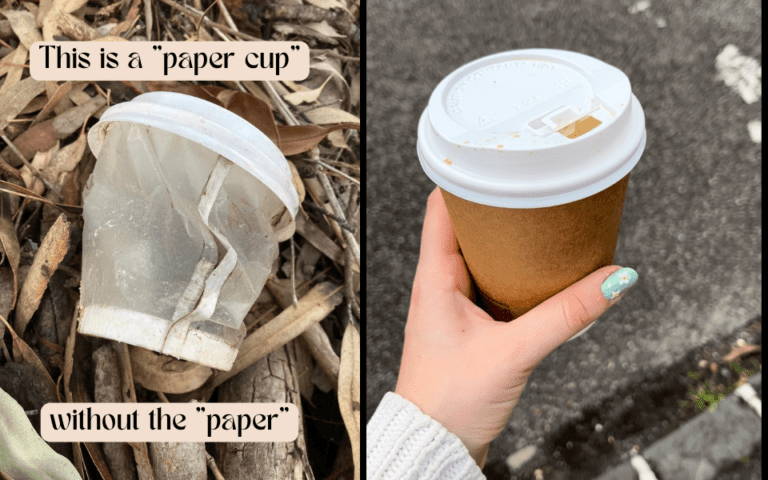
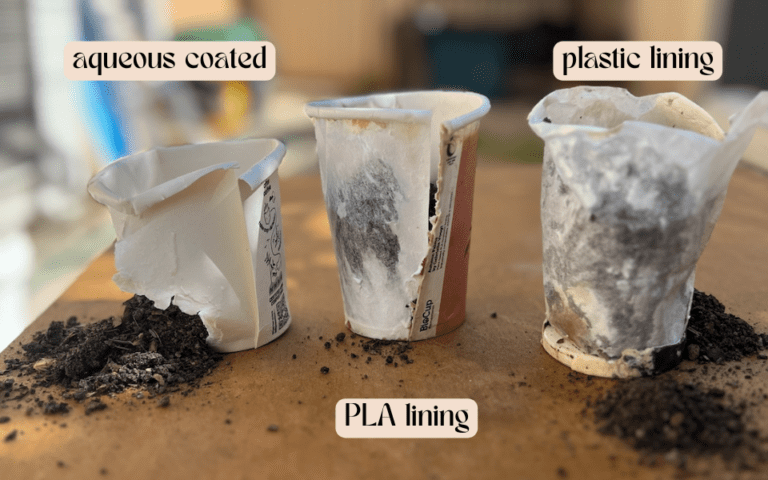
Why Choose Aqueous Coatings for your takeaway coffee cups in Australia?
At Compostable Alternatives we currently uses aqueous coatings for our coffee cups, and here’s why they are the most sustainable choice available today in Australia:
Reduced Plastic Usage: Aqueous coatings use minimal polymer (<1%) compared to traditional linings, significantly reducing plastic waste. While the European Flustix certification allows some brands to label their products as “plastic-free” if they contain less than 10% plastic by weight, we believe this can be misleading. To avoid greenwashing, we choose not to make such claims, ensuring transparency and honesty in our sustainability practices.
Home Compostability: Unlike PLA, aqueous-coated cups are certified to the Australian standards 5810 to safely break down in home composting systems or worm farms, making them more convenient for consumers and better for the environment.
Recyclability: Aqueous coatings do not interfere with the recycling process as much as plastic linings, making it easier to be recycled as paper products. Most coffee cups cannot be recycled in Australia (due to their (bio)plastic lining) and cup detector machines are used in some recycling centres to prevent contamination.
The Future: Exploring PHA
Compostable Alternatives is also exploring the potential of PHA linings. While not yet commercially viable, PHAs represent the next frontier in sustainable packaging:
- Biodegradability: PHAs are completely biodegradable in various environments, including marine settings, which addresses the issue of plastic pollution in oceans.
- Renewable Sources: PHAs are derived from bio-based waste materials, supporting a circular economy.
Practical Considerations for Coffee Entrepreneurs
When choosing takeaway coffee cups, it’s essential to consider the waste infrastructure available in your area. Here are some tips to help you make the best choice:
Assess Local Composting Facilities: If your local area supports industrial composting, PLA cups might be an option. However, for areas without such facilities, home compostable options like aqueous-coated cups are preferable.
Educate Customers: Inform your customers about how to properly dispose of their coffee cups. Clear instructions on composting or recycling can significantly improve the environmental impact.
Evaluate Supplier Certifications: Ensure that the coffee cups you choose meet international composting certifications and local Australian verification standards. This ensures the products are genuinely compostable and not just greenwashed.
Stay Informed: The field of sustainable packaging is constantly evolving. Keep an eye on emerging technologies like PHA and be ready to adapt your choices as new, more sustainable options become available.
Get in Touch Today
Choosing the right takeaway coffee cups is a critical decision for Australian coffee entrepreneurs. By understanding the different lining barriers and their environmental impacts, you can make informed choices that align with your sustainability goals. Compostable Alternatives’ aqueous-coated cups offer a practical and eco-friendly solution today, with exciting future potential in materials like PHA. By staying informed and proactive, you can contribute to a greener coffee culture in Australia.
For more information on our products and to stay updated on the latest in sustainable packaging, visit the Compostable Alternatives website. Together, we can brew a better future.
About the author:
Marion is a French entrepreneur, profoundly interested in the composting industry. Her words are her own thoughts and come from her research and learning. Although she quotes and sources the information she shares, Marion is not a scientist or a researcher and her opinions should not be understood as a scientific truth.
Through her findings and experience in the industry, she is attempting to support hospitality businesses and producers in their search of alternative choices to single-use and other types of plastic packaging. You should always do your own research to best inform yourself.
Share this article :
Compost Club Blog
- All Posts
- Coffee Cups
- Composting
- News
- South Australia
- Back
- commercially compostable products
- home compostable products
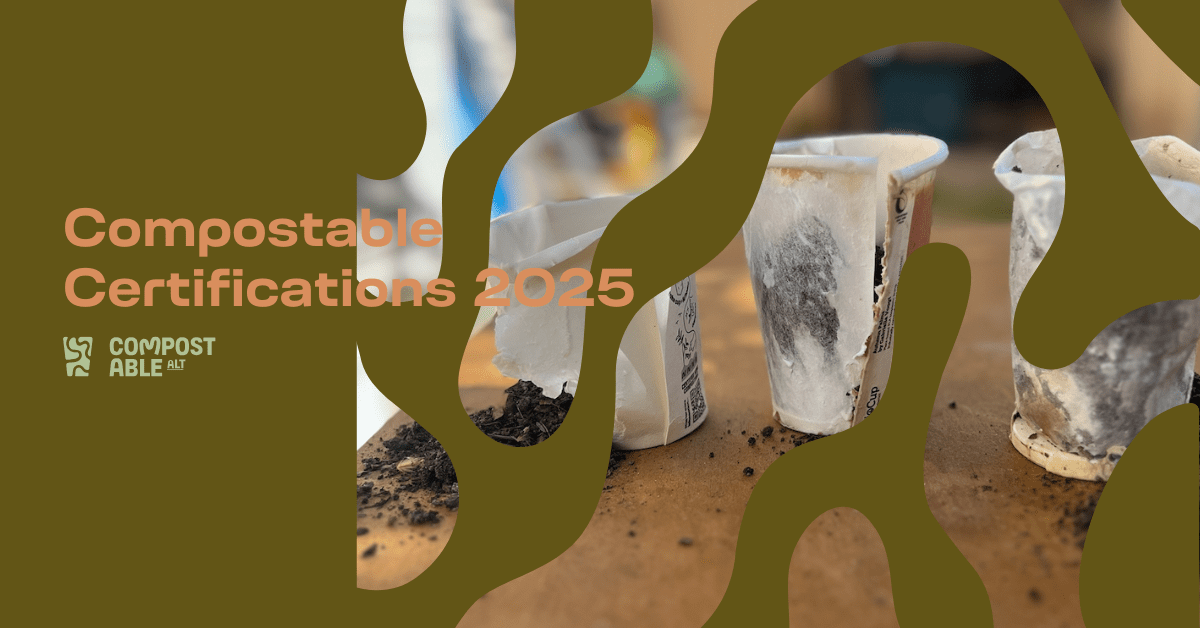
2025 Update on Australian and NZ Compostable Certifications There have been new updates to the Australian and New Zealand standards...
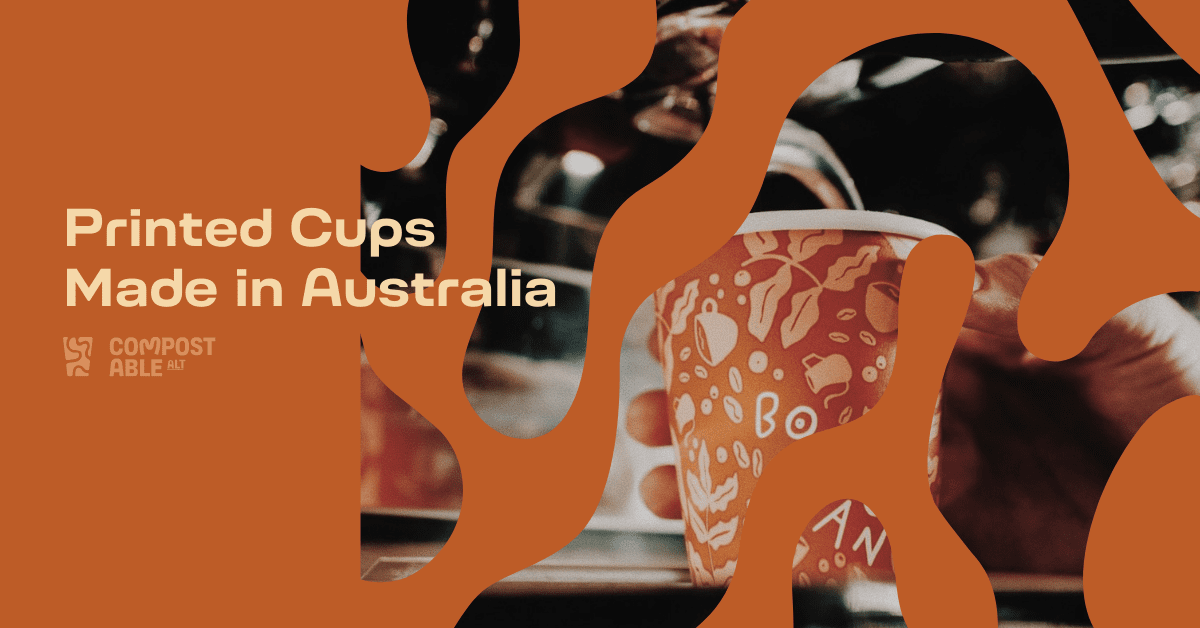
Printed cups made in australia Customised Hot Coffee Cups Our customised hot coffee cups are made in Australia, certified home...
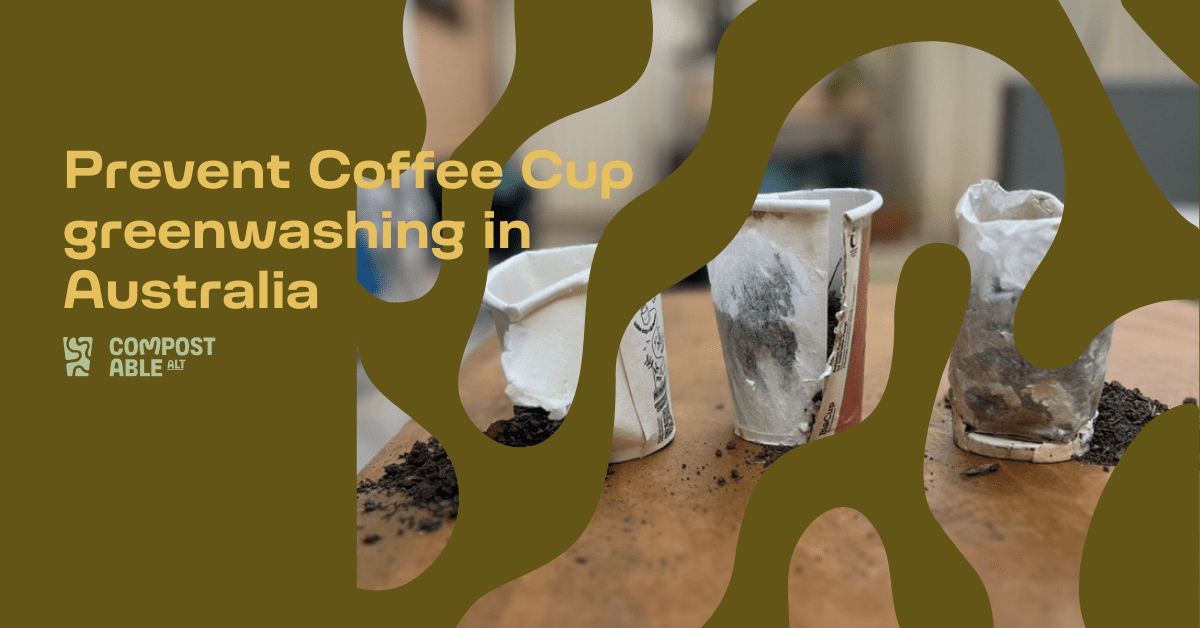
Prevent Coffee Cups Greenwashing: A 2025 Guide for Coffee Entrepreneur Australia’s coffee culture is booming, and with it comes the...

